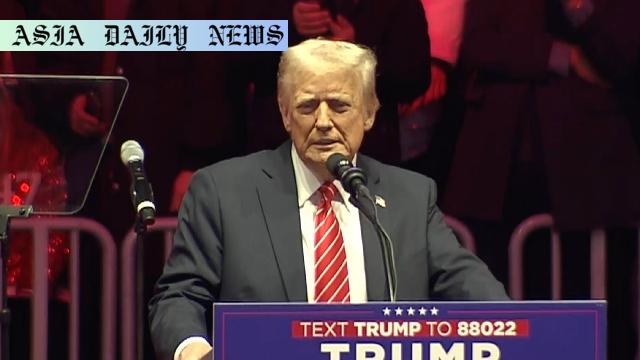Federal Workforce: Trump administration incentivizes resignations with financial benefits amid restructuring plans and return-to-office mandates.
Federal Workforce: Trump administration offers financial buyouts to encourage resignations.
Restructuring plans include downsizing and enforcing in-office attendance for remote workers.
Critics warn of potentially harmful effects on the economy and workplace morale.

Trump Administration’s Move to Restructure the Federal Workforce
The Trump administration has introduced an ambitious initiative targeting the federal workforce in the form of financial buyouts. Aiming to reduce the size of government agencies, this move seeks to reshape the workings of the federal system. The changes come as part of a larger restructuring and realignment plan geared toward streamlining federal operations.
Key Components of the Federal Buyout Program
Under the announced program, employees are offered financial incentives to voluntarily resign from their positions. According to an email released by the US Office of Personnel Management, employees who opt for resignation under the terms of the program will maintain full pay and benefits until September 30, 2021. This timeline ensures financial stability while encouraging a decision to step away from government service.
Transition from Remote Work to Office Attendance
In addition to buyouts, a significant change is the push for in-office attendance. Federal employees working remotely since the COVID-19 pandemic must return to offices five days a week, a clear effort by the administration to reestablish traditional workplace structures. While framed as part of fostering reliability and trustworthiness, this decision has garnered substantial criticism given its potential to disrupt work-life balance and productivity.
Economic and Workplace Implications
Both supporters and critics acknowledge the broader implications of these measures. Shrinking the federal workforce, which currently employs over 3 million individuals, could lead to far-reaching consequences. As the Associated Press suggests, even a partial acceptance of these buyouts may trigger economic disruptions and social uncertainty. Moreover, critics suggest that such changes risk cultivating a ‘toxic environment,’ effectively encouraging resignations even among unwilling employees.
Labor Union and Worker Advocacy Response
The American Federation of Government Employees (AFGE) labor union has been vocal in its condemnation of these measures. In their view, this initiative undermines the federal workforce, creating an inhospitable environment for employees, whether through forced return-to-office mandates or unclear incentives to leave. Through social media channels, the AFGE has cautioned employees to avoid making rushed decisions about their professional futures.
Public Perception and Critique of the Restructuring Program
Public sentiment surrounding this move remains polarized. Proponents argue for the necessity of government efficiency and a reduced federal footprint, which they claim aligns with fiscal responsibility goals. On the other hand, detractors highlight the risk that downsizing poses to the continuity of essential public services and the morale of those who remain within the workforce but face heightened workloads and pressure.
Potential Long-Term Effects on Society
Beyond government offices, the ripple effects of such workforce shifts are likely to extend into society at large. Public service availability may face interruptions, and the labor market could experience sudden surges as former federal employees compete for private-sector roles. The administration’s approach, labeled ‘unprecedented’ by some observers, underscores the tension between shrinking bureaucracy and meeting the needs of a growing population.
Conclusion
While the Trump administration’s buyout program may be a bold step toward redefining federal workforce operations, its latent risks and ambiguities cannot be overlooked. The intersection of economic, social, and professional concerns casts this initiative as a potential inflection point for governance and policy, urging policymakers and stakeholders to evaluate its broader implications carefully.
Commentary
The Complexity of Restructuring the Federal Workforce
The Trump administration’s buyout initiative highlights the complex interplay between efficiency, workforce management, and individual livelihoods. While the offer of financial incentives for federal employees to resign may appear pragmatic on the surface, it raises several important questions about the underlying motives and potential consequences.
Balancing Efficiency and Public Service
Restructuring a workforce as large as the federal government requires a delicate balance. On the one hand, optimizing resources and reducing redundancies are legitimate goals. On the other hand, a sudden downsizing of over 3 million government positions risks creating gaps in essential public services, as well as potential chaos for employees and society alike. Policymakers must consider whether the long-term benefits outweigh the potential for short-term disruptions.
The Human Factor and Workplace Morale
One of the most concerning aspects of this initiative is its potential impact on morale within the federal workforce. By fostering an environment where resignations are encouraged, even incentivized, remaining employees may feel undervalued or expendable. Additionally, the requirement for a return to office attendance could exacerbate tensions among workers who have adapted to remote work and achieved high levels of productivity in that setup.
Looking to the Future
Ultimately, the success or failure of this program will depend on its implementation and the support offered to both departing and remaining employees. A thoughtful, transparent approach could minimize disruptions, but a poorly managed effort could leave lasting scars on the federal workforce. It will be critical for future administrations, labor unions, and advocacy groups to closely monitor the outcomes and mitigate any negative effects on the economy and public services.


